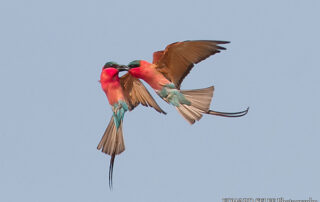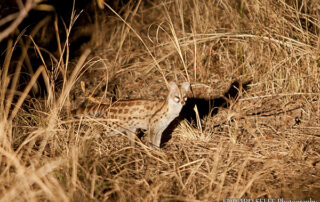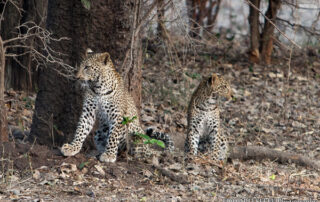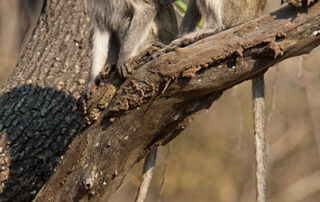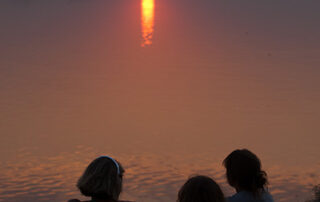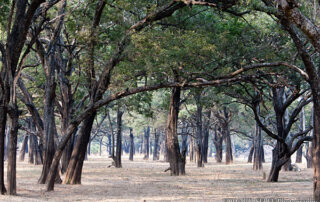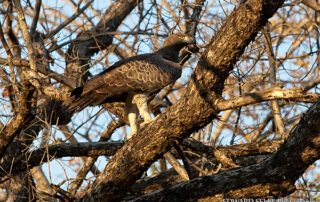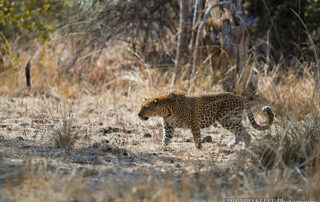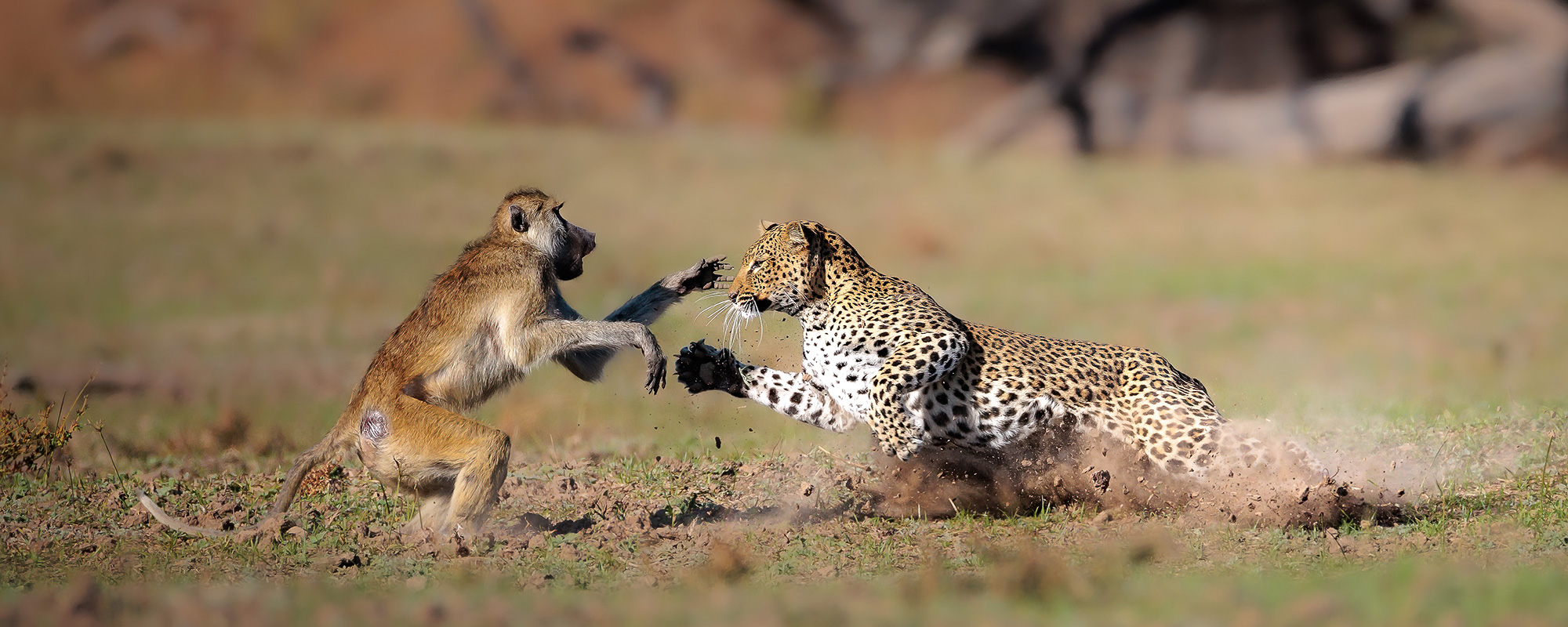
WELCOME TO MY
WILDLIFE BLOG
Aerobatics
The Carmine Bee-eaters have arrived in huge numbers and are beginning to excavate holes in the river banks. Some have more work to do than others as some will take holes occupied previously by white-fronted Bee-eaters which have now finished nesting. There is a fair amount of squabbling over nesting sites at this time, and sometimes you can catch the action if you are fast enough!!
Night Drives
We're lucky to run night drives here - not many parks in Africa will allow vehicles to move around after dark. We use the chance to search for nocturnal creatures which are harder or impossible to see during daylight hours. Large Spotted Genets are one of the nocturnal hunters which we regularly see. They search for insects and small rodents in their scrubby habitat. Leopards are visible during the day, but are often more active at [...]
Killer Leopard….
We know many of the leopards in our surrounding area, and we often refer to them by the name of the area in which they live. One male leopard has no need of such descriptions since he's very distinctive - he's huge (I once briefly mistook him for a lion in the distance on a night drive!) and he missing one of his eyes. I found him two nights ago right in the centre of his [...]
Curious Kittlitz
Kittlitz Plovers are small waterbirds that feed on insects in the sand and mud at the edge of waterways. I was crossing some sand the other day, and I found this one fiercely defending his area against a larger White-Crowned Plover. Eventually the larger bird moved off and the defender returned to his patch of sand.
Black and White
Often photographers use black and white in situations where the light is poor and colours won't be rendered correctly. I've used this technique in the past and found it very effective in low-light conditions. But the best black and white photos should probably be taken in good light and 'composed' in black and white to take account of the greater role played by textures and tones. I put my camera on B&W mode the other day [...]
Update on Cubs
A while back, I wrote about a female leopard who was bringing up a couple of young cubs nearby. We've been watching them grow up over the last 6 months and have enjoyed watching them playing together and learning the skills they'll need later on. The male cub is growing fast and becoming fairly adventurous - he's twice got himself in trouble with baboons, and his mother has had to rescue him! Yesterday, I found them [...]
Cheeky Monkeys
We found these Vervet monkeys playing on a sunny branch early in the morning after a cold night. Their play became more and more active as they warmed up in the golden sunlight.
There’s nothing…..
.....like a Luangwa Sunset.
Ebony Grove
Ebony Trees grow in areas which are regularly inundated with water for long periods, in conditions that few other trees can tolerate. In some places there are huge groves of these majestic trees, and even in the middle of the day, with harsh overhead light, they convey a feeling of calm serenity.
Martial Eagle
As I was driving my guests through some thick bush a few days ago, the huge shape of a Martial Eagle flew up from beside the road and landed in the tree opposite. We looked at it for a while and I suggested that it might have been on the ground because it had tried to catch something. Its crop was empty so I guessed it hadn't been feeding and had perhaps missed its target. The [...]
Drying lagoons
As the lagoons dry up and water becomes more scarce, antelope come to drink in the shallower channels left by the movements of hippos. In this case, I liked the way the channel draws the viewer's eye into the image and towards the group of Puku drinking in the distance.
Leopard vs Baboon…
The relationship between leopards and baboons is a complex game of threat and fear. Baboons certainly feature highly on leopards' menus, and leopards in the Luangwa are well known for being expert primate hunters. But baboons are very strong and highly social, so leopards, which are solitary hunters, must balance the risk of getting injured in the process. I watched some very interesting interactions between these two species last week after we came across the body [...]

